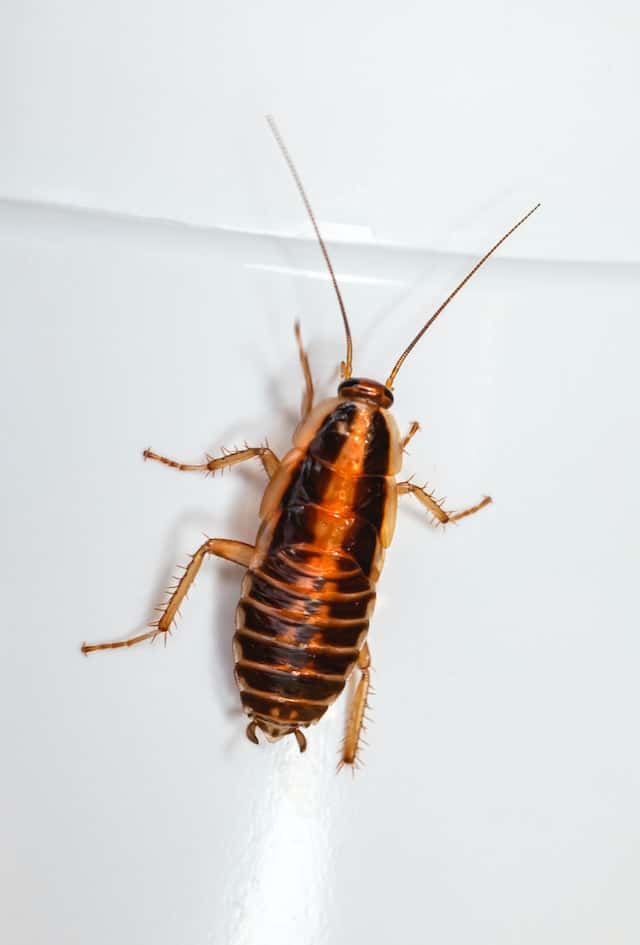
Car cockroach infestations can be a nightmare for any vehicle owner. In this article, we will provide you with practical solutions to tackle the issue of car cockroaches head-on. From prevention to elimination, we’ve got you covered.
Cockroaches in a Car: Identifying the Problem
To address a car cockroach infestation, first, you must confirm the presence of these unwanted pests. Look for signs such as tiny droppings, shed exoskeletons, or the cockroaches themselves scurrying around when you turn on the car’s interior lights at night.
Signs of Roaches in Car
Identify the telltale signs of roaches in your car so that you can take action as soon as possible. We’ll help you recognize the indications of a potential infestation.
- Droppings: Small, dark droppings in various areas of your car.
- Shed Skin: Cockroaches shed their exoskeletons, leaving behind translucent shells.
- Unusual Odor: A musty or oily odor in the car’s interior.
- Nocturnal Activity: Roaches are often active at night; you may see them when you turn on the lights.
- Small Holes: Look for small holes or damage to upholstery or other materials caused by roaches.
Unwanted Guests: Where Do Cockroaches Hide in Your Car?
Cockroaches are resourceful pests that can find hiding spots in a car, often in areas that provide them with shelter and access to food and water sources. Here are common places where cockroaches may hide in a car:
- Under Seats: Cockroaches often hide under the seats of a car, as these areas provide darkness and a concealed space.
- In Seat Cracks: Small cracks and crevices in the upholstery or between seat components can be attractive hiding spots.
- In the Glove Compartment: Cockroaches may hide in the glove compartment, especially if there are paper documents or crumbs inside.
- In the Trunk: The trunk of a car can be a hiding place for cockroaches, especially if there is clutter or food items stored there.
- Around the Dashboard: Cockroaches can hide behind or inside the dashboard, where they may find warmth and electrical connections to chew on.
- In Vents: Roaches may enter the car through exterior vents and find their way into the ventilation system, making it challenging to remove them.
- In the Headliner: The headliner, or the fabric covering the car’s ceiling, can provide a hidden space for roaches.
- Near Electronics: Roaches may be attracted to the warmth of electronic components, such as radios or navigation systems, and may hide nearby.
- In Cupholders: Crumbs and spilled liquids can attract roaches to cupholders, making them potential hiding spots.
- Under Carpeting: Some cars have carpeting that extends under the seats or throughout the interior, providing hiding places for roaches.
- In Door Panels: Roaches can access the interior of the car through door panels and may hide there.
- Around Seatbelts: Small gaps and crevices around seatbelt attachments can be hiding spots for roaches.
Seasonal and Regional Trends of Cockroaches in Cars
Cockroaches can be found in cars throughout the year, but their prevalence may vary depending on geographic location and climate. In the United States, the most common states and seasons where you are more likely to find cockroaches in cars include:
- Warm and Humid States: Cockroaches thrive in warm and humid environments, making them more common in states with such climates. States in the southern United States, including Florida, Texas, Louisiana, and Georgia, tend to have more issues with cockroaches in cars.
- Spring and Summer: Cockroaches are generally more active during the warmer months of spring and summer. This is when they are more likely to venture into vehicles in search of food, water, and shelter.
- Urban Areas: Urban areas with a higher population density and more food sources are more susceptible to cockroach infestations in cars. Cities in warm states are often hotspots.
- Coastal Regions: Coastal regions, where the climate is typically milder and more humid, can also see a higher prevalence of cockroaches in cars.
Effective Methods for Eliminating Cockroaches from Your Car
To effectively get rid of cockroaches in a car, it’s essential to use a combination of methods. Here are the main steps and methods you can employ:
Thorough Cleaning
- Remove all items from the car, including trash and clutter.
- Vacuum the entire interior, paying attention to cracks, crevices, and hidden areas.
- Use a crevice tool to reach tight spaces.
- Remove and clean floor mats and upholstery if possible.
Natural Repellents
- Place natural repellents like bay leaves, catnip sachets, or diatomaceous earth in various areas of the car.
- These substances can deter cockroaches with their scent and texture.
Seal Entry Points
- Identify and seal any cracks, gaps, or openings in the car’s interior and exterior.
- Cockroaches can enter through surprisingly small spaces.
Cockroach Traps
- Set up cockroach traps inside the car, particularly in areas where you’ve noticed their activity.
- Glue traps are effective at capturing roaches.
Professional Pest Control Products
If your cockroach infestation persists despite your best efforts, it may be time to turn to commercial pest control products designed for indoor use. These products are formulated to be effective against roaches and are typically available in various forms, including sprays, baits, and bug bombs. Here’s a closer look at some of the options and how they work:
Boric Acid
Boric acid is a versatile and effective substance for killing roaches, their larvae, and their eggs. It’s relatively safe for children and pets when used properly. To use boric acid, you can:
- Combine it with food crumbs: Roaches are attracted to the crumbs and will consume both substances, leading to their demise.
- Apply boric acid in areas where roaches are active: Sprinkle a thin layer of boric acid powder near cockroach hiding spots, such as cracks and crevices.
Chemical Sprays
Chemical sprays designed for roach control can be used to directly target roaches and their hiding places. Be sure to:
- Read and follow the manufacturer’s instructions carefully.
- Apply the spray in areas where roaches are seen or suspected, including cracks, crevices, and along baseboards.
- Exercise caution when using chemical sprays in an enclosed space like a car, ensuring proper ventilation.
Bug Bombs (Foggers)
Bug bombs, or foggers, release a pesticide mist that fills the enclosed space, effectively reaching roaches hiding in various areas of your car. Here’s how to use them:
- Carefully read and adhere to the instructions provided with the bug bomb.
- Place the fogger in the car as directed.
- Seal the car to prevent the mist from escaping and leave it undisturbed for the recommended time.
- Ventilate the car thoroughly before driving to ensure no lingering pesticide residue remains.
When using any commercial pest control products, it’s essential to prioritize safety. Always store and apply these products as directed by the manufacturer to protect yourself and others from potential harm. Additionally, consider wearing appropriate protective gear, such as gloves and a mask, when handling and applying these substances.
Regular Maintenance
- Maintain a clean car interior by avoiding leaving food or crumbs.
- Vacuum your car regularly, especially if you frequently eat inside.
- Keep trash and clutter out of the vehicle.
Professional Pest Control Services
- In severe infestations that are difficult to manage, consider seeking help from a pest control professional.
- Professionals have the expertise and tools to effectively eliminate cockroaches.
Prevention is Key: Keeping Cockroaches Out of Your Car

To ward off cockroach infestations in your car, proactive prevention measures are your best defense. Begin by meticulously inspecting your vehicle, both inside and out, for any potential entry points. Seal any cracks, gaps, or openings with appropriate sealants like silicone caulk. Pay special attention to door seals, ensuring they are intact and without gaps that could allow roaches to infiltrate.
Maintaining a clean car interior is equally critical. Eliminate clutter to deny roaches hiding spots, and always remove food, crumbs, and trash from your vehicle. Even the tiniest remnants can lure these pests. Establish a routine of regular vacuuming, focusing on areas where roaches might take refuge, such as under seats and within crevices. Additionally, disinfect all surfaces to eliminate food residue and odors, making your car a less attractive habitat for roaches. By embracing these preventive practices, you can significantly reduce the risk of cockroach infestations in your car and enjoy a pest-free driving experience.
How Long Does It Take to Get Roaches Out of Car?
The duration it takes to eliminate roaches from a car can vary significantly depending on several factors, including the severity of the infestation and the methods used. Here are approximate ranges for how long it may take:
- Minor Infestation: If you catch a roach problem early and take immediate action, you may be able to resolve it within a week or two.
- Moderate Infestation: In cases where the infestation is more widespread but not severe, it can take anywhere from a few weeks to a couple of months to completely eliminate the roaches.
- Severe Infestation: For extensive infestations with a large number of roaches, it may take several months or even longer to fully eradicate them.
Seek Professional Help
In severe infestations, it’s best to consult a pest control professional. They have the expertise and tools to eradicate cockroaches effectively. Professional extermination ensures that your car remains cockroach-free for the long term.
The Troubles and Discomforts of Cockroaches in Your Car
Having a cockroach infestation in your car is far from ideal for several compelling reasons:
- Health Concerns: Cockroaches can carry various pathogens that may pose health risks to humans. Their presence in a confined space like a car increases the chances of disease transmission.
- Unpleasant Odor: Roaches produce an unpleasant, musty odor that can permeate the interior of your car, making it an uncomfortable environment to drive in.
- Damage to Car Components: Cockroaches can nibble on electrical wiring, insulation, and upholstery, potentially causing costly damage to your vehicle.
- Driving Distractions: Roaches crawling around while you’re driving can be extremely distracting and dangerous, compromising road safety.
- Embarrassment: A car infested with cockroaches can be embarrassing when carrying passengers or when parked in public places.
- Resale Value: Cockroach infestations can significantly reduce the resale value of your vehicle, making it harder to sell or trade-in.
In summary, the presence of cockroaches in your car not only creates health and safety concerns but can also lead to financial and social inconveniences. Taking prompt action to eliminate them is essential for a comfortable and functional driving experience.
Conclusion
A car cockroach infestation can be a distressing experience, but with the right approach, you can eliminate these unwanted passengers. Remember to identify the problem, take preventive measures, and use natural or commercial remedies when necessary. If all else fails, don’t hesitate to call in the experts. Keep your car cockroach-free, ensuring a clean and comfortable driving experience.


